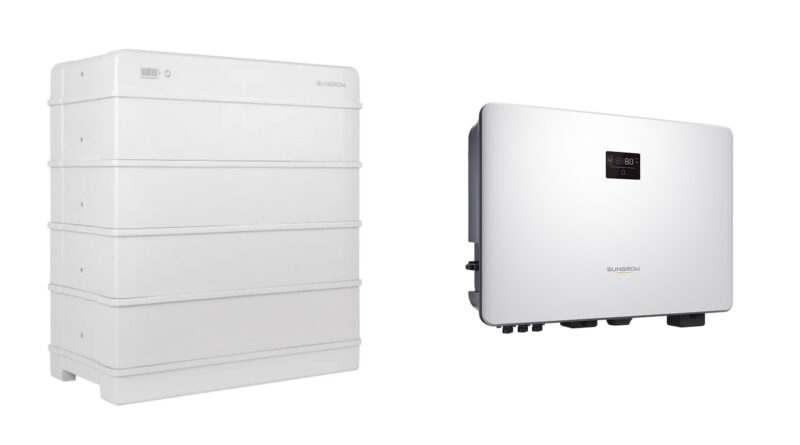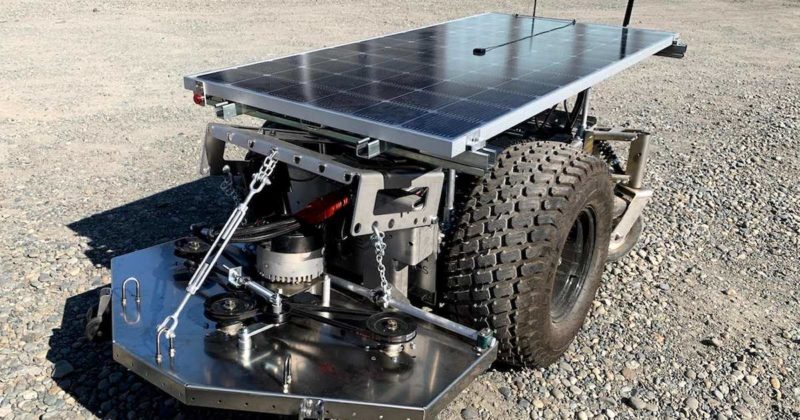Is The Budget Sungrow Battery Any Good? I Installed One To Find Out…
Recently, I decided to retrofit a 12.8 kWh Sungrow battery and hybrid inverter to a 6.6kW solar system on a rental unit I own. The video above is a deep dive from start to finish, but if you don’t feel like watching, here’s a summary.
Why A Battery? And Why Sungrow?
Why a battery? I wanted lower electricity bills and backup. For many years, I had a generous 22 cent feed-in tariff from AGL. They recently let me know they were dropping it to 6 cents.
When it comes to home batteries, lower feed-in-tariffs = higher battery savings. With a 46c usage and a 6c feed-in-tariff, my best-case savings would be $5 per day, or $1825 per year. That would pay back the $14,000 retrofit in about 8 years.
In practice, I’ll save much less because that number is predicated on fully charging with solar every day and fully discharging every night. That won’t happen. The 6.6 kW solar won’t fully charge the battery every day of the year, and the AirBnB tenants won’t drain the battery every night.
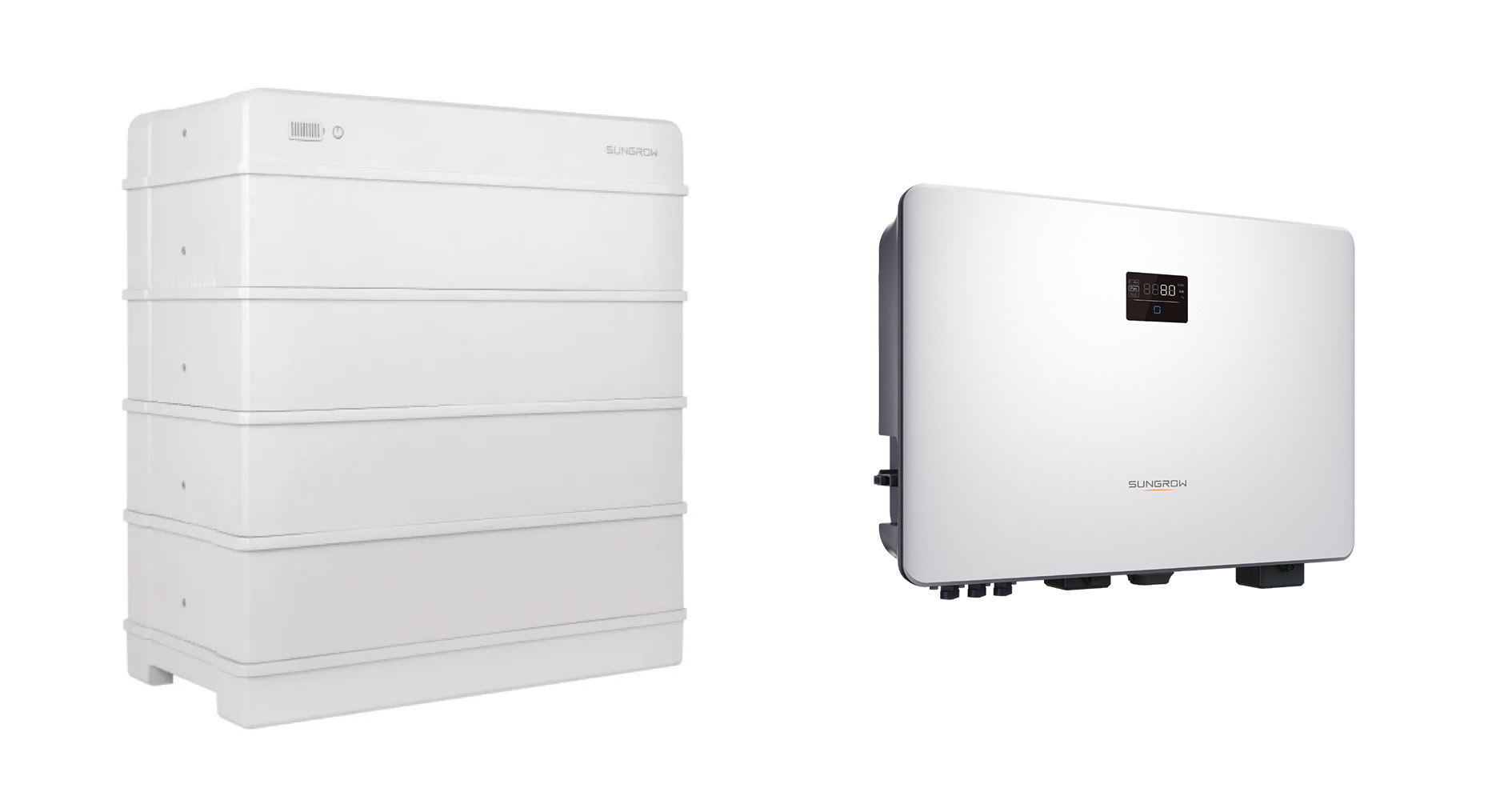
The Sungrow battery and inverter that I installed
Why a Sungrow? Installers rave about them, and Australian Sungrow battery reviews are mostly excellent too. Despite being at the budget end of the spectrum, they are reliable, easy to commission and control, and the monitoring works well. The specific models installed were:
- SH5.0RS Sungrow Hybrid 5.0kW Residential Single-Phase Inverter
- SBR128 12.8 kWh modular battery (4 x 3.2 kWh modules)
- S100 Sungrow single-phase energy smart meter
Why Choose Sungrow Over The Tesla Powerwall?
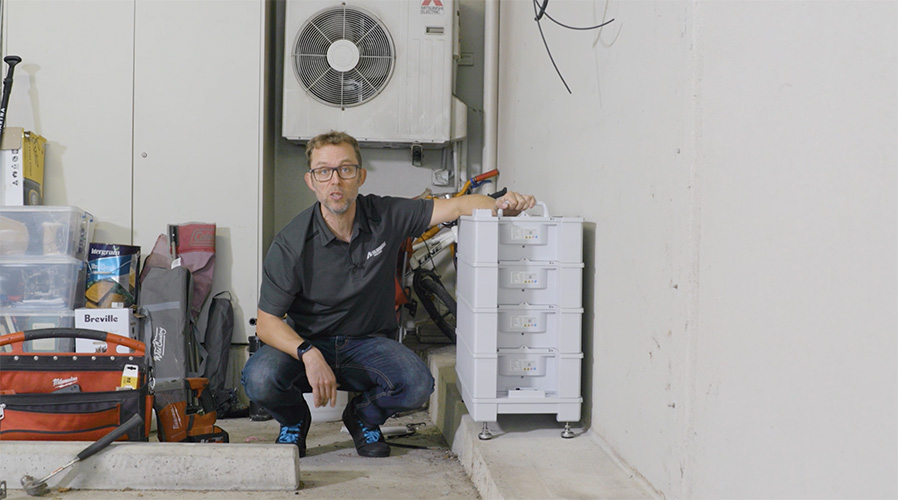
Unlike the Tesla Powerwall, with a fixed 13.5 kWh per battery, the Sungrow is modular and can be expanded in 3.2 kWh increments.
The Tesla Powerwall is the most popular battery in Australia. I chose Sungrow because it offers a similar amount of storage for $2,000 to $3,000 less – and because I already have a Powerwall on my house and wanted to try something different. At SolarQuotes, we won’t accept free review hardware from manufacturers because my experience is corporate marketing departments always bitch and moan if your review is not a puff piece. So we buy the hardware we review. Cost of buying your own gear to review? Expensive. Independence from corporate marketing types? Priceless.
Also note that if you buy a complete solar + Sungrow setup all at once (as opposed to retrofitting), you can get a 6.6kW system + Sungrow battery for around the same price as just a Tesla Powerwall.
Why Replace My Fronius Inverter?
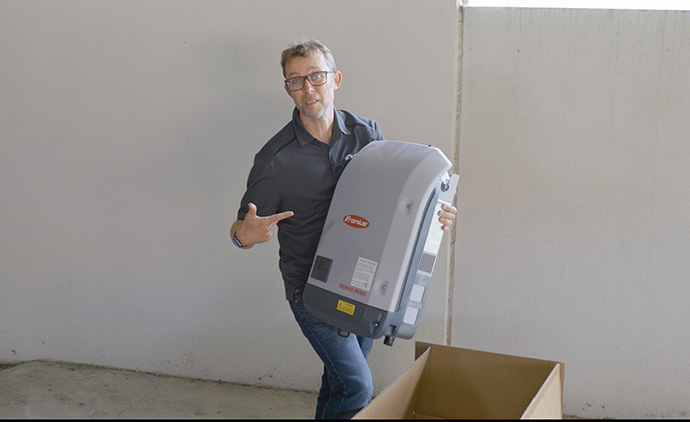
Sorry Fronius fans!
To retrofit the Sungrow battery to my existing system, I decided to replace the six-year-old Fronius inverter with a Sungrow hybrid inverter. The Sungrow inverter handles both the solar and the battery.
Fronius inverters get rave reviews, so why replace it? I could have kept the Fronius and installed the Sungrow next to it, and AC coupled the battery, the Fronius managing the solar while the Sungrow handles the battery. But a Sungrow-only system keeps things simple from an installation and monitoring perspective.
Advantages of replacing the Fronius with the Sungrow:
✅ Keeps things simple
✅ Less stuff on the wall
✅ DC coupling is marginally more efficient
✅ Fresh warranties
Disadvantages of replacing the Fronius with the Sungrow:
❌ Less redundancy if the inverter fails
❌ Removing a perfectly good inverter.
❌ The battery was installed by a different installer to the solar. If there’s an issue with the solar system, it is now half installed by two companies, making things interesting. Tip: it’s usually best to get the original installer to do the battery too, In this case, the original installer did not supply Sungrow.
And for those concerned about e-waste, a viewer bought my Fronius to replace a broken unit. $500 of beer tokens is always appreciated.
Bye Bye Solar Analytics Hardware
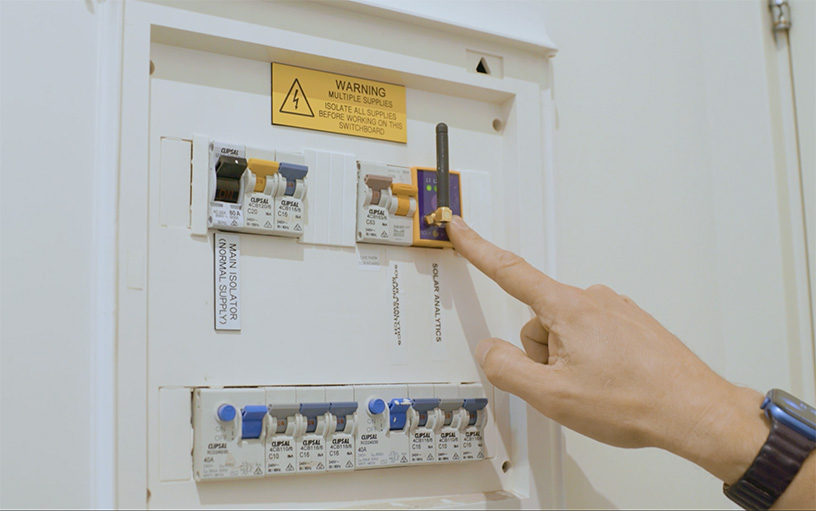
The old Solar Analytics hardware
I replaced my old Solar Analytics hardware with the Sungrow smart meter.
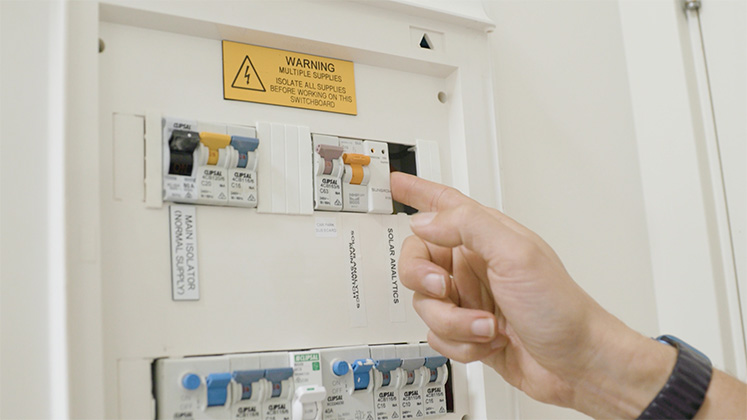
The new Sungrow monitoring hardware. More room in the switchboard! And, don’t worry: the hole was covered up before the system was signed off.
Because Sungrow integrates with Solar Analytics software over the internet, I could have Sungrow monitoring and Solar Analytics on the same system. If you want to see how that turned out – read this detailed post: Solar Analytics Integrated Review: Better Than Sungrow Monitoring?
What Will My Sungrow Battery Back Up In A Blackout?
In terms of backup, I didn’t back up my entire flat because the Sungrow battery has a 25 amp limit – which is around 35% of a normal house supply. Instead, I just backed up essential circuits – lights, fridge, and a few general-purpose outlets (GPOs).
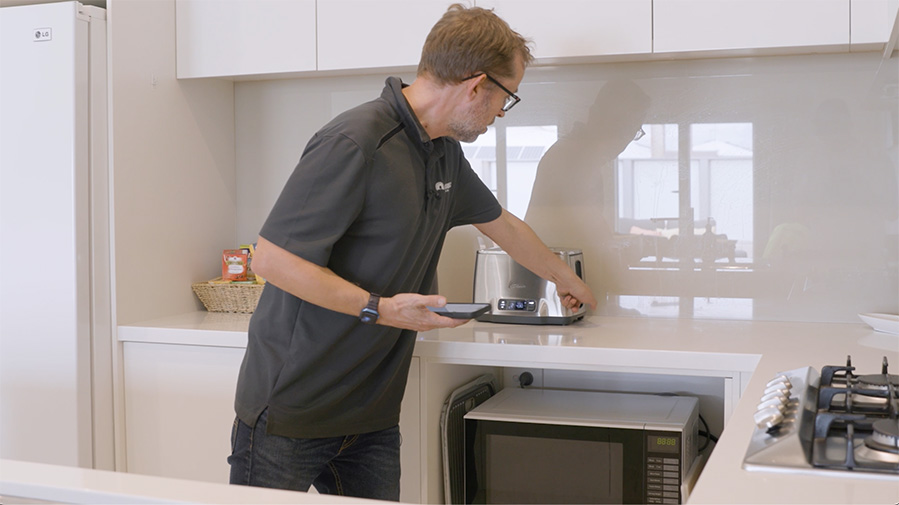
Very important to have vegemite on toast in a blackout situation.
The Nitty-Gritty Of Replacing The Inverter And Expanding The Sungrow Battery
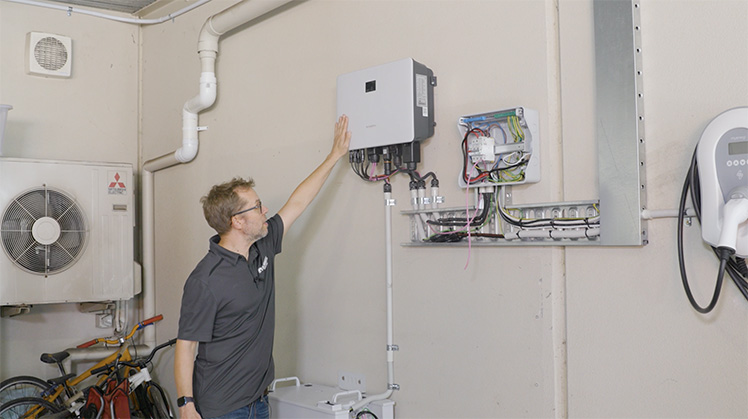
You can buy a cover for the bottom third of the Sungrow if you don’t like to look at wiring
Installing the hybrid inverter on the wall and placing the batteries were simple enough. Wiring the battery to the hybrid inverter required only DC power, earth, and comms connections to communicate with the battery management system (BMS).
Moreover, adding more storage capacity in the future is a straightforward task. The installer promises me that they remove the top unit and stack on another unit. Each additional battery module increases the storage by 3.2 kilowatt-hours.
Testing the System
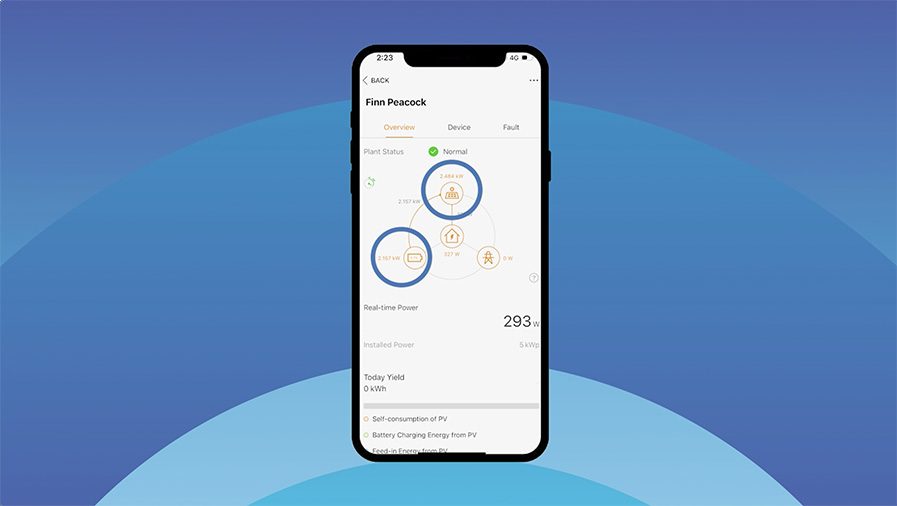
Following the six-hour installation, I conducted a series of tests with the installers. We confirmed the system’s functionality, ensuring the battery charges when there’s more solar power than the unit’s usage and discharges when the unit’s power consumption exceeds the solar generation.
We also tested the backup function by disconnecting the unit from the grid, and we were happy to see that the power supply to the essential circuits remained uninterrupted.
Finishing up
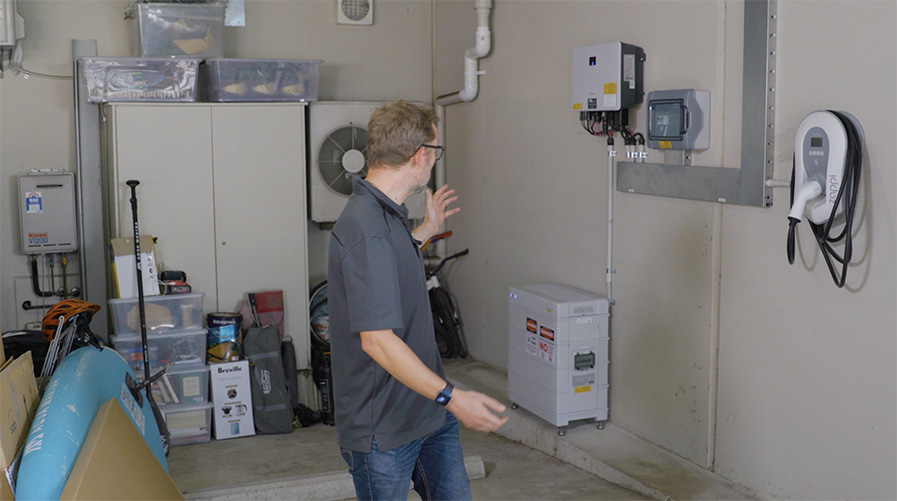
The end result – a schmick new inverter and battery on the wall.
Overall, the retrofitting process was painless. This project gave me a firsthand experience with Sungrow batteries and inverters, which, this far, have lived up to the rave review from installers. The Sungrow inverter and battery combination is worth looking at for anyone considering retrofitting a home battery. And if you are buying solar and batteries together, it’s even better value.
The one downside is the limited backup capacity. If you need to back up your whole house – look at a system with more backup grunt.
Over the following year, I want to real-world test two particular features of the Sungrow:
- Integration with SA’s solar sponge tariff. How easy is it to control the battery to charge on super-off-peak daytime grid electricity on crappy solar days?
- Can the Sungrow charge overnight on the off-peak tariff to get through the early morning peak?
- How easy and affordable is it – in practice – to add battery modules?
Keep an eye on the blog for updates.
Original Source: https://www.solarquotes.com.au/blog/sungrow-battery-home-installation/

